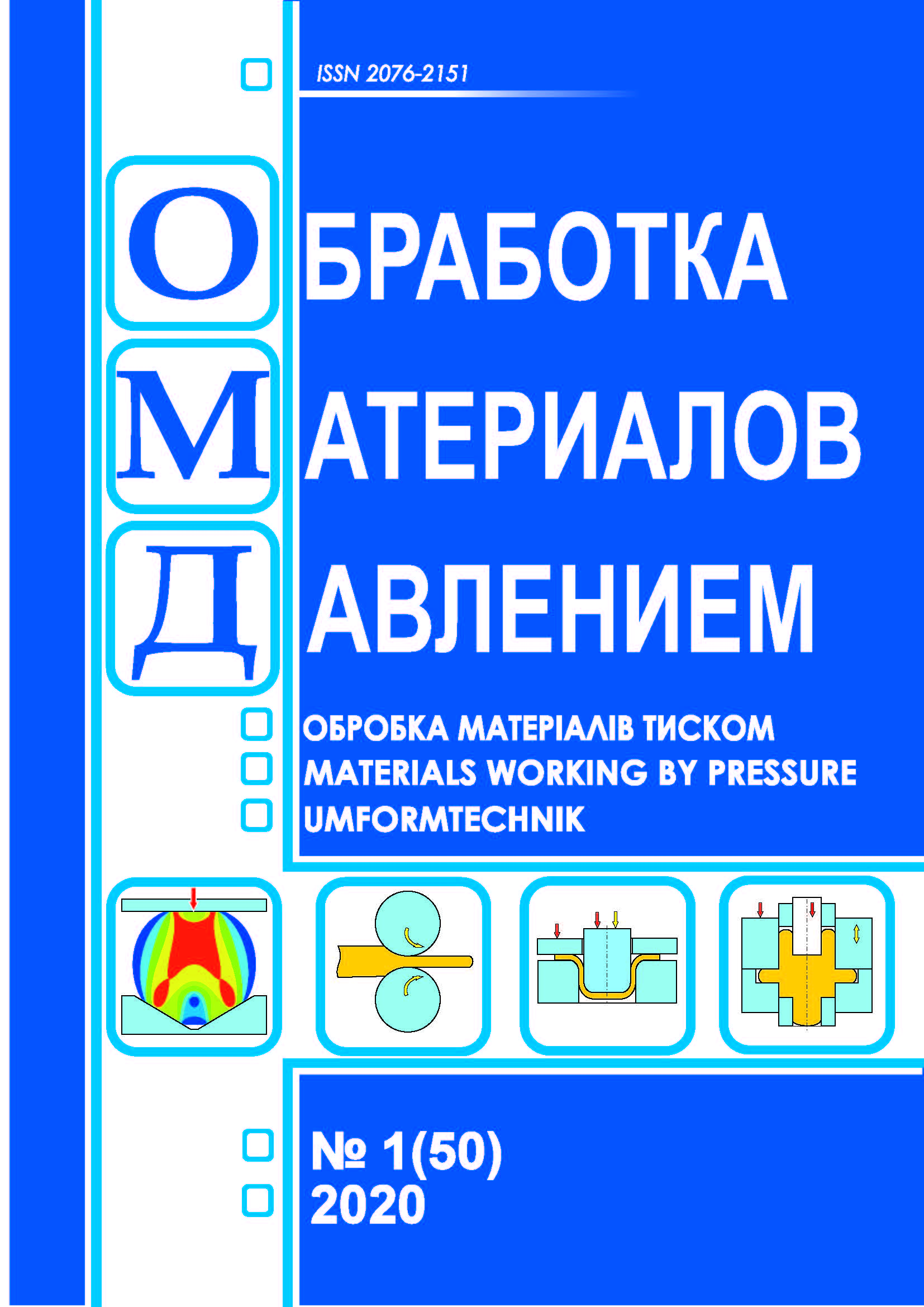Solid-state modification of polylactic acid by equal channel multiple angular extrusion
DOI:
https://doi.org/10.37142/2076-2151/2020-1(50)198Keywords:
polylactic acid, equal-channel multiple-angular extrusion, structure, physical and mechanical properties.Abstract
Beloshenko V. А., Voznyak А. V., Vozniak I. V., Dmitrenko V. Yu., Savchenko B. М. Solid-state modification of polylactic acid by equal channel multiple angular extrusion. Material working by pressure. 2020. № 1 (50). P. 198-201.
In this paper, we considered the possibility of using simple shear deformation realized by the method of equal-channel multiple-angular extrusion (ECMAE) for solid-state modification of linear polylactic acid. ECMAE was carried out along the D + C route, in which pairwise connected inclined deforming channels are separated by vertical channels and rotate in steps of 90°, with a strain intensity ΔГ = 0.83, a cumulative strain e = 8.5, an extrusion speed and temperature of 0.6 mm/s, and 160 °C, respectively. The indicated processing conditions made it possible to generate the maximum orientation of the linear polylactic acid chains during ECMAE. It is shown that ECMAE is an effective way of structural modification of linear polylactic acid and opens up new possibilities in controlling its morphology and properties. According to the results of tensile tests, toughness and dynamic mechanical analysis, it was found that ECMAE can simultaneously increase the strength, ductility and toughness of polylactic acid, and also improves its thermal stability. Thus, the Young's modulus increases from 3.19 GPa to 4.02 GPa (by 26 %), yield strength – from 50 MPa to 56 MPa (by 12 %), strain at break – from 5.6 % to 12.2 % (by 117 %), impact strength – from 55.2 kJ/m2 to 77.1 kJ/m2 (by 40 %). As shown by studies using differential scanning calorimetry and scanning electron microscopy, the observed effects are due to the creation of an orientation order; an increase in the degree of crystallinity (from 64 to 69 %) due to the ECMAE-determined deformation-induced crystallization; the formation of a more perfect crystalline structure due to the fact that the shear deformation might enhance the crystal transformation more effectively than the extensional deformation.

